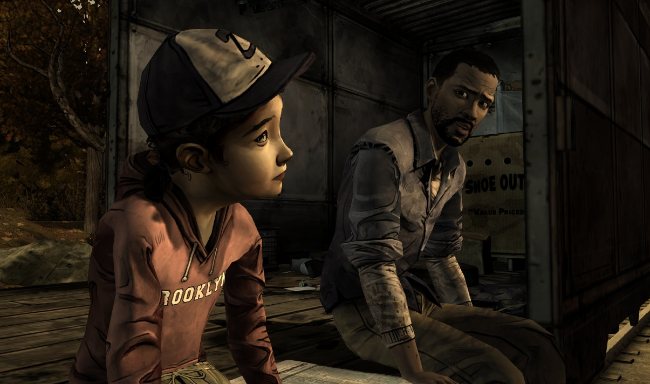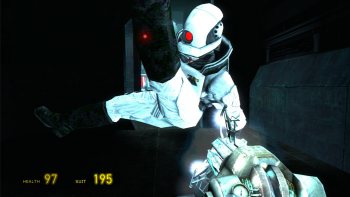Using Narrative and Gameplay Congruency to Enhance Meaningful Play

Everyone loves to talk about immersion in games. The act of submerging the player (or yourself) into a game world, impossible though it may be, remains an unobtainable goal that many developers strive for. But this pursuit is shortsighted – is it really desirable to make someone so entranced by your game they forget to eat, bathe, sleep?
Instead of striving to immerse the player into the game world, we should instead be trying to meet them halfway – which is why, for games that feature narrative of any kind, I’ve been investigating uses of narrative and gameplay congruency to combine, through mechanics, the player’s desires and experiences with those of the player character in order to imbue gameplay with that special quality that stays with you long after the credits roll. In other words, anytime when the desires of the player are in alignment with the desires of the character.
Amnesia: The Dark Descent developer Frictional Games calls it the player-protagonist connection; others refer to it as player/protagonist synchronicity; but whatever the terminology, this overlap can make for powerful, memorable moments when utilized aptly.
Like when:
♦ In Half-Life, when you’re captured and all of your weapons are taken away. Your sense of powerless is the same as Gordon’s, and your scramble to re-arm yourself is made that much more meaningful;

♦ In Half-Life 2, when the upgraded gravity gun finally lets you toss around those Combine jerks who’ve been pushing you around the entire game – your frustration mirrored in Gordon’s endless encounters with them;
♦ In The Walking Dead, when you (and Lee) take Clementine under your wing as an adoptive parent. While she’s certainly not your child (being a computer game character), she’s not Lee’s either, and a shared sense of unrelated guardianship is established that lasts the entire game;
♦ In Fez (to a lesser extent) when you rotate the world for the first time, as it’s as new a sensation to you as it is to Gomez;
♦ In dys4ia, as you stumble your way through snapshots of awkward movement-based mini-games with barely a sense of how to navigate through this world, just like the narrator.
Though this technique is hardly new, it remains difficult to perfect. And while the most common instance of it – the amnesiac protagonist – is still certainly effective, it was pretty much done to death in every genre over the late 80s and 90s, forcing developers to get creative.
But there’s still so much we can do that has yet to be attempted. How can we distill these kinds of events into something resembling guidelines? To start, let’s look at commonalities between some of the above examples, in rising degrees of complexity:
1. In all of the above examples, the player is a participant during the entirety of the thread that establishes narrative/gameplay congruency.

In The Walking Dead, you don’t begin the game with Clementine in tow – you’re introduced to Lee and the game world in advance, so that you feel more grounded in his character when you do meet her, and so that the sense of adoption is felt by both the player and the character.
In the Half-Life example, or in any other game where you are stripped of your weapons, you feel the full brunt of the “loss” arc (have no or few weapons -> accumulate weapons -> lose all weapons). While some games start you out with a fully-powered character only to remove abilities after an introductory sequence, this is not as effective since you haven’t gone through the process of earning them yourself, and so you don’t properly value them or feel the loss as much.
2. The narrative/gameplay congruency dynamic is centered around the primary mechanic of the game.
In Half-Life and its sequel, both the weapon confiscation and gravity gun upgrade events are based around the act of shooting. In The Walking Dead, the focus is on creating a player/protagonist synchronicity through conversation and interaction, the heart of the game’s inner workings. In Fez, the moment of discovery is firmly based around the act of rotating the world; and in dys4ia, the sense of disjointedness permeates the one thing you do in the game: try to navigate an at once familiar and unfamiliar world.
3. The stronger the game’s commitment, the stronger the congruency, the stronger the connection.
The amount of preparation and integration on the development end seems to be directly correlated with the quality of the payoff and corresponding increase in congruency. While Half-Life’s weapon confiscation sequence doesn’t require much specialized development and serves as more of a break in pace than a game-defining event, the buildup for Half-Life 2’s gravity gun upgrade takes the entire game before manifesting as a supremely satisfying twist (with nontrivial gameplay ramifications) that lasts for the duration of the game. The Walking Dead uses the Lee/Clementine relationship to color the entire game’s events cast against real stakes, while Fez’s initial “Eureka” moment of discovery lasts only until you leave the starting area.
Armed with these observations, how do we transform them into takeaway points? Let’s take a look:
1. The player is a participant during the entirety of the thread that establishes narrative/gameplay congruency.

→ Create meaningful stakes through gameplay, not other means. If a monster is about to wreak havoc on a village, don’t communicate this through text, audio logs or a cutscene. Show it through gameplay; have it destroy a bridge or kill a notable NPC while the player is fighting or fleeing from it. This way, both the player and player character will have faced and survived the challenge firsthand.
2. The narrative/gameplay congruency dynamic is centered around the primary mechanic of the game.
→ Layer subtext under your mechanics. The Walking Dead takes great pains to inform the player that his decisions affect the outcome of the story – first with a blatant title screen, then by immediately having player decisions effect the outcome of events. If it’s possible, integrate narrative subtext into core gameplay mechanics to infuse every instance of gameplay with added meaning. For example, in a shooter, tying the regeneration rate of an energy weapon to a vulnerable character’s shield would add ramifications for choosing to attack versus defend.
3. The stronger the game’s commitment, the stronger the congruency, the stronger the connection.
→ Use grounding techniques to bridge the gap between player and player character. Steel Battalion’s legendary 40-odd button controller accomplished an unparalleled feat in aligning the player’s experience with that of the player character, though such a heartfelt (and expensive) commitment doomed the game to cult status. A less drastic example: players control remote combat drones fighting an interplanetary war, with their in-game player character using an interface similar to the player’s controller. If the player’s drone dies, another one is deployed, much like how extra lives function to the player – creating an overlap between the player’s experience and the drone pilot player character.
Regardless, these ideas reflect just a few ways of creating narrative/gameplay congruency. If you have ideas for other ways to integrate this into gameplay, or more examples of it in other games, I’d love to hear your thoughts in the comments.
